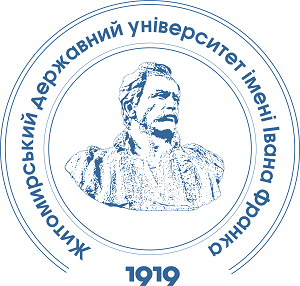FORMATION OF PHOTOSYNTHETIC PRODUCTIVITY INDICATORS OF MARIGOLD CROPS DEPENDING ON THE METHODS OF APPLICATION OF PLANT GROWTH REGULATORS
DOI:
https://doi.org/10.32782/naturaljournal.11.2025.20Keywords:
marigolds, growth regulator, seed treatment, spraying of crops, leaf area, photosynthetic potentialAbstract
A significant range of pharmacological effects of medicinal preparations from plant raw materials determines their significant place in the arsenal of therapeutic agents. It is known that a significant advantage of natural medicinal raw materials, compared to synthetic drugs, is greater safetyand the ability to influence the etiology of the disease, and not only its consequences. Marigold(Calendula officinalis L.) is a common medicinal plant that can be grown in all areas of Ukraine, however, to obtain high-quality medicinal raw materials, it is desirable to include plant growth regulators inthe technology of growing the crop. The purpose of the research was to assess the photosynthetic productivity of marigolds according to the following indicators: leaf surface area (by development phases using the “cutting” method) and photosynthetic potential depending on the methods of applicationof plant growth regulators. The research was carried out with the marigold variety Soniachna Krasunia. A two-factor experiment was set up, where factor A is a growth regulator (without a growth regulator – control, Ivin, Avangard Stimul, Azotofit R), factor B is the method of applying the growth regulator (seed treatment, spraying of sowing in the leaf rosette phase). The studies used general scientific methodsto summarize the results of the studies, which are based on objectivity, demonstrability, reproduction, and mathematical and statistical methods – for processing experimental data.The studies established that on average over three years of research, the optimal indicators of the leaf area of marigolds were characterized by the following variants: spraying of vegetative plants with Azotofit R, Avangard Stimul preparations and pre-sowing treatment of seeds with the growth regulator Ivin, the values were respectively: 430, 421 and 414 cm2/plant, exceeding the controls by42–56 cm2/plant. The maximum photosynthetic potential was determined in the period fromthe beginning to the end of plant flowering, the values on the control variants were8630–8362 cm2×day/plant, and with the use of plant growth regulators the indicators increasedby 533–1 270 cm2×day/plant. The greatest effect was provided by the preparations Azotofit Rand Avangard Stimul for spraying vegetative plants, as well as Ivin – for seed treatment, withthe corresponding indicators: 9 632, 9 430 and 9 274 cm2×day/plant. Based on the data obtained, recommendations will be formed on the improved technology of growing marigolds, which may beof practical interest to farmers and scientific interest to the scientific community.
References
Громовик Б.П., Гасюк Г.Д., Левицька О.Р. Менеджмент і маркетинг у фармації: підручник. К. Медицина, 2008. 752 с.
Коваленко О.А., Стебліченко О.І. Фотосинтетична продуктивність посівів чаберу садового (Satureja hortensis L.) залежно від агротехнічних прийомів вирощування. Зрошуване землеробств. 2020. Вип. 73. С. 216–223.
Лікарські рослини. Значення, ботанічні і біологічні особливості, технологія вирощування, заготівля / В.В. Лихочвор та ін. Львів : НВФ «Українські технології», 2003. 208 с.
Мірзоєва Т.В. Окремі аспекти формування доданої вартості у галузі лікарського рослинництва. Економіка та суспільство. 2023. Вип. № 49. С. 45. https://doi.org/10.32782/2524-0072/2023-49-66.
Мусієнко М.М. Фізіологія рослин : підручник. Київ : Либідь, 2005. 808 с.
Побережна Л.В., Бахмат О.М. Фотосинтетична продуктивність посівів нуту звичайного залежно від обробки насіння та позакореневого підживлення рослин. Подільський вісник: сільське господарство, техніка, економіка. 2024. Вип. 1 (42). С. 39–46. https://doi.org/10.37406/2706-9052-2024-1.6.
Присяжнюк О.І., Топчій О.В. Формування елементів структури врожайності сочевиці залежно від строків сівби, мікродобрив і регуляторів росту. Наукові праці Інституту біоенергетичних культур і цукрових буряків. 2017. Вип. 25. С. 72–78 [Електронний ресурс]. URL: http://bioenergy.gov.ua/sites/default/files/articles/72-25_0.pdf (дата звернення: 10.01.2025).
Притуляк Р.М., Удолатій В.О., Кавецький Ю.П. Чиста продуктивність фотосинтезу посівів тритикале озимого за дії гербіцидів та регулятора росту рослин. Збірник студентських наукових праць Уманського національного університету садівництва, присвячений 125-річчю від дня народження професора В.Л. Симеренка. Умань, 2016. Ч. 2. С. 68–69.
Скляр В.Г. Екологічна фізіологія рослин : підручник. Суми : Університетська книга, 2015. 271 с.
Строяновський В.С. Фотосинтетичний потенціал агроценозів фенхелю звичайного залежно від агротехнічних факторів в умовах Лісостепу Західного. Таврійський науковий вісник. 2021. Вип. 119. С. 129–135. https://doi.org/10.32851/2226-0099.2021.119.17.
Сухова Г.І. Фотосинтетична діяльність сортів сочевиці в умовах Східного Лісостепу України. Вісник Харківського національного аграрного університету імені В.В. Докучаєва. 2012. Вип. 2. С. 150–155 [Електронний ресурс]. URL: http://nbuv.gov.ua/UJRN/Vkhnau_ roslyn_2012_2_26 (дата звернення: 10.01.2025).
Фізіологія сільськогосподарських рослин / М.М. Макрушин та ін. Вінниця : Нова книга, 2006. 413 с.
Хоміна В.Я. Показники фотосинтетичного потенціалу агроценозів розторопші плямистої залежно від впливу окремих агротехнічних заходів. Вісник Сумського національного аграрного університету. 2014. Вип. 3 (27). С. 119–123 [Електронний ресурс]. URL: http://nbuv.gov.ua/UJRN/Vsna_agro_2014_3_30 (дата звернення: 10.01.2025).
Alnuqaydan A.M., Lenehan C.E., Hughes R.R., Sanderson B.J. Extracts from Calendula officina-lis offer in vitro protection against H2O2 induced oxidative stress cell killing of human skin cells. Phytother Res. 2015. Vol. 29. Р. 120–123. https://doi.org/10.1002/ptr.5236.
Lupak O., Klepach H., Antonyak H. Marigold (Calendula officinalis L.) and its components as a source of biologically active substances. Ecology and human health / Ed. by Andrzej Krynski et al. Czestochowa : Educator, 2018. Р. 65–76.






